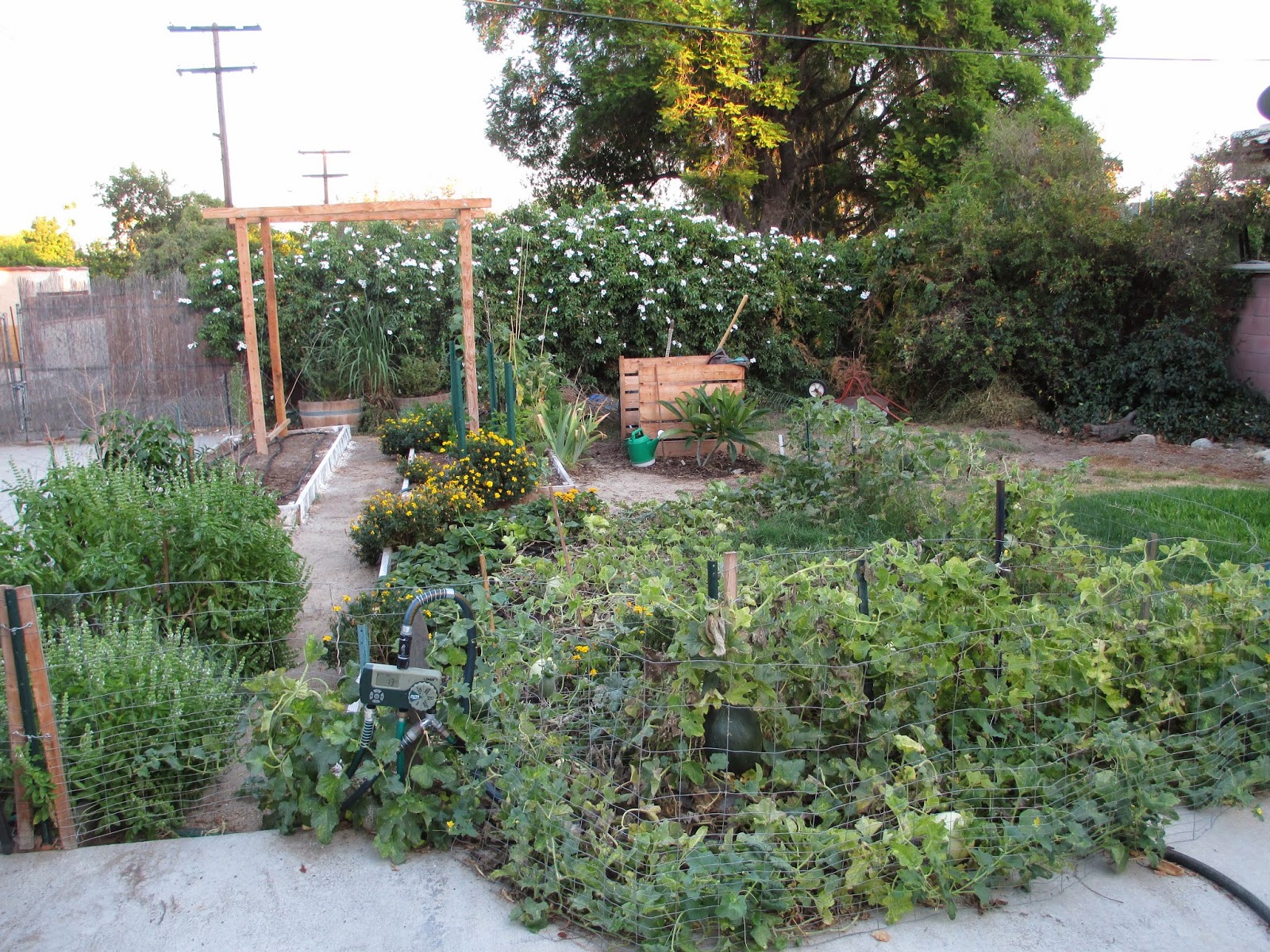Is anything more creepy than a grub? Yuck. Luckily my favorite nursery carries beneficial nematodes (Heterohabditis bacteriophora). These are tiny organisms that are harmless to humans, animals, plants and worms but are deadly to numerous harmful insects. They are effective in killing grubs, cutworms, Japanese and cucumber beetles, many types of weevils, red fire ants, maggots, and hundreds of other soil dwelling insects.
Last year I had puzzling holes in one of my garden beds that were about the diameter of my little finger. The trails were like tiny mole trails. Right under the surface of the soil, something was tunneling causing raised trails. Eventually I discovered that I did not have tiny moles, I had grubs. This year they are in my compost.
Grubs are not beneficial to the garden. Some types borrow through the soil and eat the plant roots. Some grubs are the larvae of fruit eating beetles like the green June beetle (aka figeater) or the bumble flower beetle. Because the adult insects eat fruit, I prefer to control them. Some people feel it is not necessary to control the grubs in a compost pile as they do aid in breaking down the organic matter. I can't stand them. I want them gone, so beneficial nematodes are my weapon of choice.
At risk of giving my readers the creeps, I will now describe the life cycle of the warrior nematodes. This is your warning, it gets ugly so skip this paragraph if you want. The juvenile nematodes seek out their pray, in this case the victim is a grub. When they find the grub, the nematodes enter their prey though natural openings or by borrowing into it. I warned you. Once inside, they release certain bacteria which also then live inside the grub. The bacteria are only able to survive inside the grub (or other victim) and as the bacteria multiply, the grub dies. This takes 24-48 hours. The nematodes then ingest the bacteria and the grub corpse. Each nematode matures into a hermaphroditic female and lays eggs inside the infected victim. More creepy news...only some of the eggs are laid outside of the female nematode. Some remain inside the female and as these eggs hatch and mature, the juvenile nematodes then eat their mother! The nematodes mature and mate inside the grub/host/victim, then emerge from the dead grub 12-14 days after infection. They will travel through the soil looking for another tasty grub. How is that for gross? Thanks for reading, now go take some antacid.
So, the nematodes are living creatures that come in a package like this.
Because they are alive, they are kept refrigerated and my friends at Sego Nursery (12-126 Burbank Blvd, No. Hollywood, CA 91607) advised me to go straight home so the creatures will not die in the hot car. If you live in the area and have not gone to Sego Nursery, you simply must go. It is family owed and has every plant you can imagine. Well, almost. The family is friendly and incredibly knowledgeable, my favorite nursery for sure. But I digress, back to nematodes...
Keep them refrigerated until you are ready to release them. It is best to release them on a cool day, or in the evening as they do best in cool weather. They come in a damp sponge in a sealed packet.
Remove the sponge and place it in a bucket of lukewarm water (at least one quart of water). Squeeze the sponge repeatedly to release the nematodes into the water. The package says to keep squeezing for a couple of minutes. Then you can put the sponge in another bucketful of water and repeat the process to create two buckets of solution. Discard the sponge.
This creates enough solution to treat 2000 square feet of surface area. Once the nematodes are released into the water, they must be used within one hour. You can then use a watering can, garden pump sprayer or hose-end sprayer to disperse the warriors. Add water to dilute the solution to make enough to cover your area. I poured the solution into my garden sprayer. The pump sprayer allows an even distribution.
Lightly water the area first, then apply the solution, then water lightly again. The nematodes will do best if the soil is moist and well-aerated.
My friends at Sego Nursery reminded me to leave the dead grubs in the soil. The dead insects are the breeding ground for the nematodes so it is best to leave them in the soil. That way, the nematodes will multiply and move into the soil, and keep those nasty grubs away. Thanks, nematodes!
























